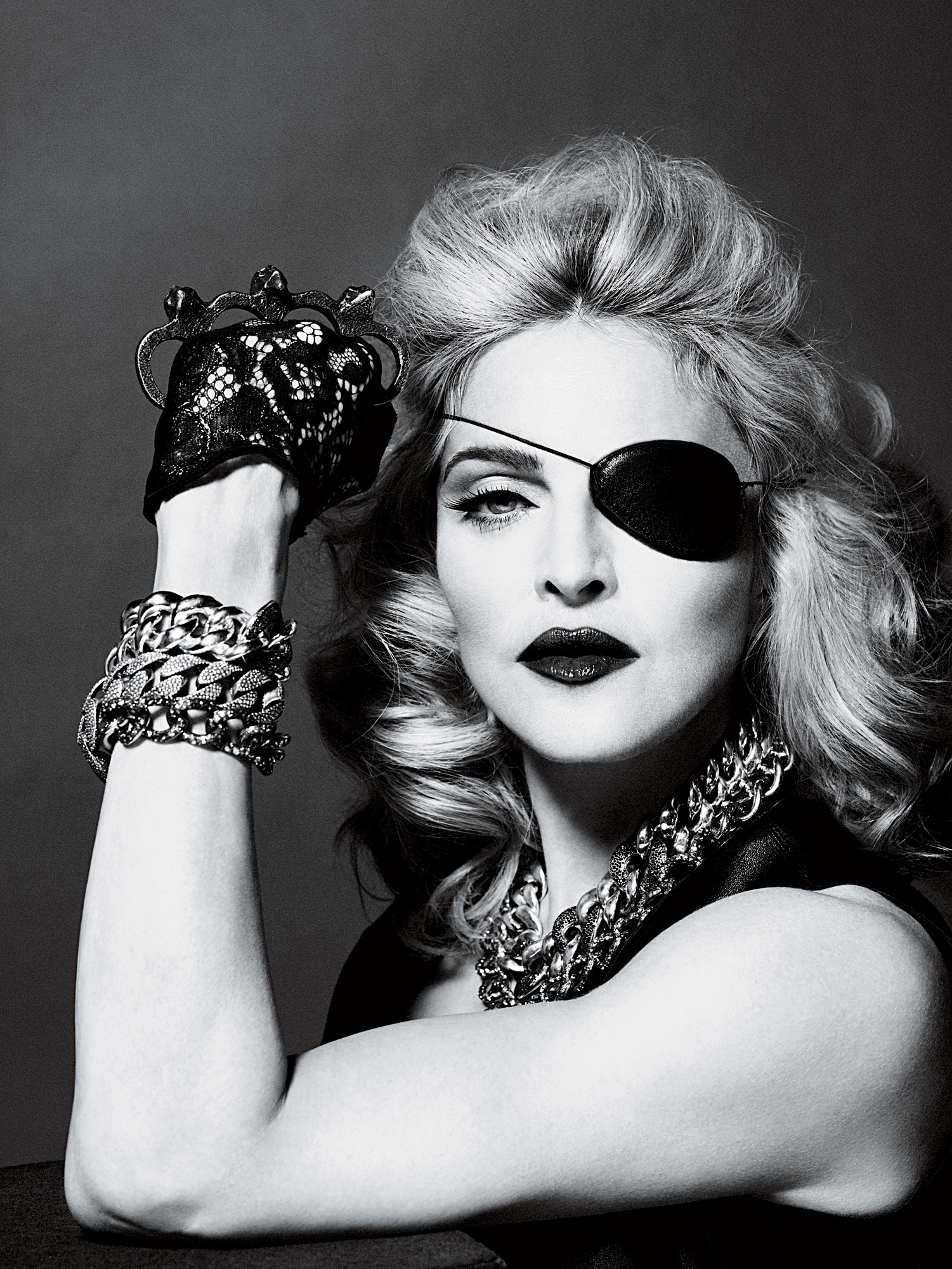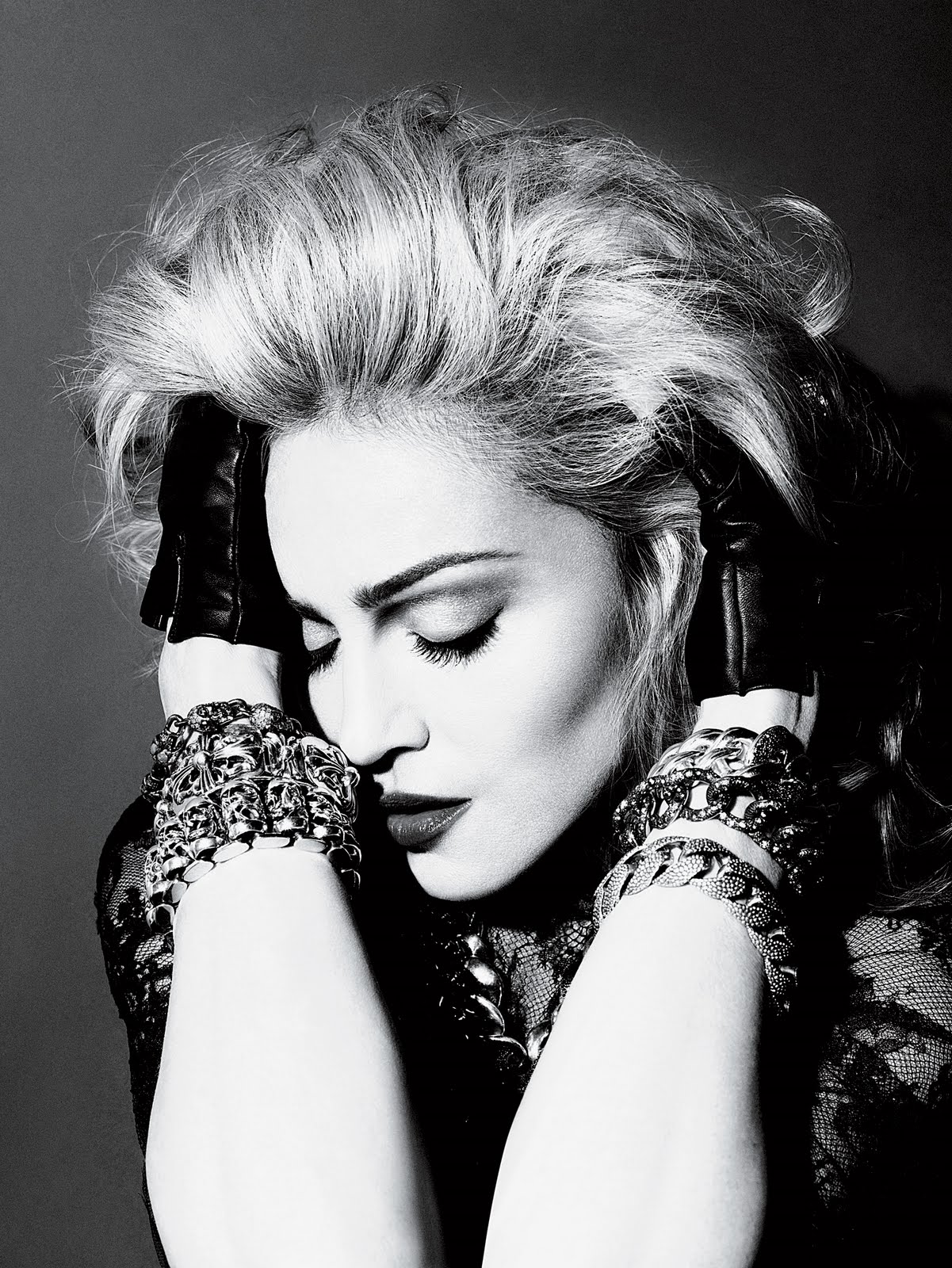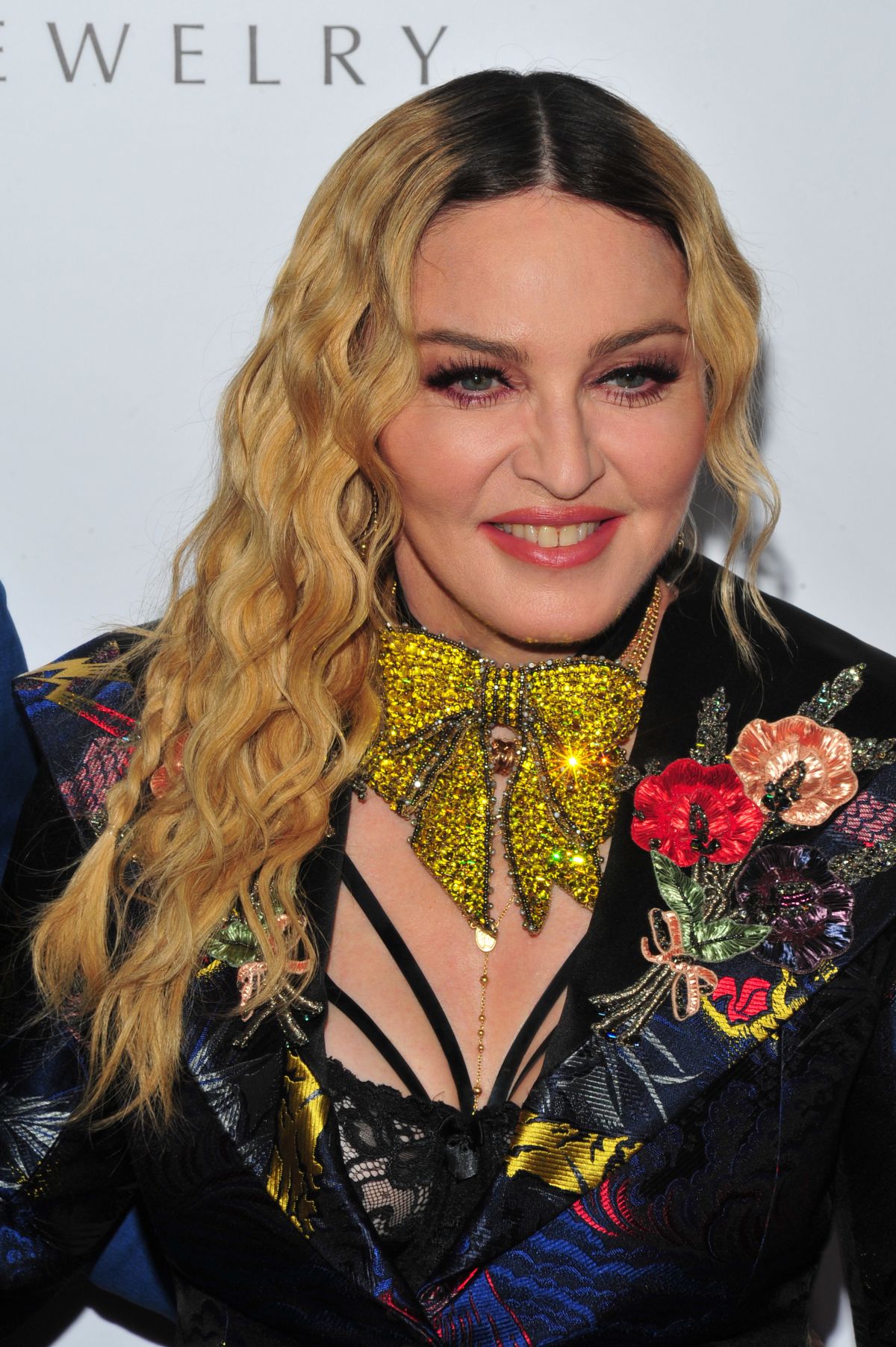Have you ever stopped to think about how some famous people seem to echo others from the past? It's a rather fascinating thing, you know, when one icon seems to pull inspiration from another. For many, the connection between Madonna, the undisputed Queen of Pop, and Marilyn Monroe, the timeless Hollywood star, is pretty clear. This isn't just about a similar blonde hairstyle or a red lip; it's a deeper conversation about how images and ideas get passed down through time, almost like finding a hidden treasure.
There's a curious thread that connects these two very different women, who lived in different times but somehow shared a spotlight. It’s a bit like those old stories of finding something precious that was lost, like a "lost silver Madonna" from history, only to see its essence reappear in a new form. Madonna, in her long career, often seemed to be, in a way, digging up and showcasing parts of Marilyn's public persona, giving them a fresh spin for a new generation. It’s more than just copying; it’s a form of artistic commentary, you might say.
This article will take a closer look at this interesting link, exploring why Madonna might have looked to Marilyn, what specific moments show this influence, and how these two figures, in their own unique ways, shaped how we think about fame, beauty, and being a powerful woman. It’s a chance to inspect an assemblage of cultural moments, seeing how one bright star reflected another, and how those reflections still shine today.
Table of Contents
- Madonna: A Brief Life Story
- Marilyn Monroe: A Brief Life Story
- Why Madonna Looked to Marilyn
- Iconic Moments: The Homage in Action
- The Cultural Echo and Legacy
- Frequently Asked Questions
- The Lasting Impression
Madonna: A Brief Life Story
Madonna Louise Ciccone, born in Bay City, Michigan, in 1958, truly carved out her own path to superstardom. She moved to New York City in the late 1970s with very little money, ready to make her mark in dance. Her early days were a struggle, but she kept pushing, moving from dance to music, which was a pretty bold move for her.
Her first album came out in 1983, and from that moment on, she just kept going. She became known for changing her look and sound all the time, which was a big part of her appeal. She was, you know, always reinventing herself, keeping everyone guessing what she would do next. This ability to shift and adapt, to be a different "Madonna" in each era, is that what made her so enduring.
She's sold a lot of records, more than any other female music artist, actually. Beyond the music, she's also acted in movies and written books for kids. She's been a strong voice for women and for the LGBTQ+ community, using her fame to speak up about things she believes in. She’s still very much a force in popular culture, even now, always finding new ways to connect with people.
Madonna's Personal Details
| Full Name | Madonna Louise Ciccone |
| Born | August 16, 1958 |
| Birthplace | Bay City, Michigan, USA |
| Occupation | Singer, Songwriter, Actress, Businesswoman |
| Years Active | 1979–present |
| Notable Traits | Constant reinvention, provocative style, strong advocacy |
Marilyn Monroe: A Brief Life Story
Norma Jeane Mortenson, who later became Marilyn Monroe, was born in Los Angeles, California, in 1926. Her early life was quite difficult, with time spent in foster homes and orphanages. She started working in a factory during World War II, which is where a photographer first spotted her, leading her into modeling. That was, you know, her very first step into the public eye.
She signed her first movie contract in the mid-1940s and quickly rose to fame. Marilyn became known for her bubbly personality, her blonde hair, and her unique way of being both innocent and glamorous at the same time. She starred in many popular films, often playing characters that were, you know, charming and a little bit naive, but always captivating.
Despite her huge success, Marilyn faced many personal struggles and pressures from her fame. She passed away far too young in 1962, but her image and what she stood for have lived on. She remains a symbol of Hollywood's Golden Age, and her influence is still felt in fashion, art, and popular culture today, very much like a timeless piece of art, perhaps even a "Madonna with angels and saints" from an older time, still admired and talked about.
Marilyn Monroe's Personal Details
| Full Name | Norma Jeane Mortenson (later Baker) |
| Born | June 1, 1926 |
| Birthplace | Los Angeles, California, USA |
| Occupation | Actress, Model, Singer |
| Years Active | 1946–1962 |
| Notable Traits | Blonde bombshell persona, captivating screen presence, enduring cultural icon |
Why Madonna Looked to Marilyn
Madonna’s fascination with Marilyn Monroe wasn't just a random choice; it was, quite possibly, a very clever artistic decision. Marilyn represented a particular kind of female power and vulnerability in the public eye. She was, you know, the ultimate Hollywood starlet, admired by everyone, yet she also had a certain sadness about her, a fragility that people found intriguing. Madonna, in her own way, was exploring these same ideas about being a woman in the public eye, about power, and about perception.
Marilyn, for all her fame, was often controlled by the studio system and by the men around her. She was a product of her time, in some respects. Madonna, on the other hand, made it her mission to be in charge of her own image and career. By referencing Marilyn, Madonna could, so, highlight the differences in their experiences. She could take Marilyn's image and reshape it, showing how a woman could be glamorous and desirable, but also strong and independent, which was a new kind of message for the 1980s.
It was a bit like a salvage operation, really, taking something from the past and giving it new life, new meaning. Madonna was, you know, identifying the powerful elements of Marilyn's legacy and then using them to build her own. She wasn't just imitating; she was commenting. She was saying, "Here's what Marilyn was, and here's what I am, and see how far we've come, or maybe how little has changed."
The choice to reference Marilyn also helped Madonna connect with a broader audience. Marilyn was a globally recognized symbol of beauty and fame. By tapping into that, Madonna could instantly communicate a certain message about glamour and ambition, even to people who didn't know much about her music. It was a visual shorthand, a powerful way to say, "I am also a star, and I understand the history of stardom."
Moreover, Marilyn’s story included elements of being misunderstood and underestimated. She was often seen as just a pretty face, but she had a sharp mind and wanted to be taken seriously as an actress. Madonna, too, faced similar challenges, often dismissed as just a pop star. So, in a way, their shared experience of fighting for respect within their industries also tied them together. It was a shared battle, almost, to be seen as more than just a surface image.
Iconic Moments: The Homage in Action
Madonna's most famous and perhaps most striking homage to Marilyn Monroe came with her 1985 music video for "Material Girl." In this video, Madonna directly recreated Marilyn's famous "Diamonds Are a Girl's Best Friend" performance from the film "Gentlemen Prefer Blondes." She wore the same pink dress, the same gloves, and even had the same stage setup. It was, you know, a very direct and clear nod to Marilyn's classic moment.
This wasn't just a simple copy, though. Madonna added her own twist to it. While Marilyn's performance was about a woman who openly loved expensive things, Madonna's version had a playful, almost ironic tone. She was, in a way, showing how she could control that image, how she could be both the "material girl" and also poke fun at the idea. It was a brilliant move, actually, that solidified her place as a pop icon who understood the power of visual storytelling.
Beyond "Material Girl," Madonna often used blonde hair and a classic Hollywood look in her early career, echoing Marilyn's signature style. Think about her looks in the late 80s and early 90s; there was a definite softness and glamour that brought Marilyn to mind. She wasn't always directly imitating, but she was, you know, drawing from that same well of classic femininity and allure. It was a subtle reference, yet very effective.
Even in her photography, Madonna would sometimes pose in ways that reminded people of Marilyn's famous pin-up shots. She understood that Marilyn's image was not just about beauty, but about a certain kind of playful sensuality that was also very powerful. Madonna took that power and, very, very much amplified it for a new era, making it bolder and more outspoken.
One could say that Madonna was, in a sense, like a metal detector, searching through the sands of cultural history and finding these powerful images that still resonated. She then polished them up and presented them in a way that was relevant to her own time, showing how these ideas of glamour and female presence could still be, you know, so incredibly impactful. It's a continuous process of discovery, you might say, in the world of pop culture.
The Cultural Echo and Legacy
The connection between Madonna and Marilyn Monroe goes beyond just a few music videos or outfits. It speaks to a larger idea about how cultural figures influence one another across generations. Marilyn set a standard for female stardom, a certain kind of magnetic appeal that was, you know, truly unique. Madonna, in turn, built upon that, but she also changed the rules.
Marilyn’s legacy is one of timeless beauty and tragic vulnerability, a figure whose image is still reproduced everywhere, from art to advertising. She is, for many, the quintessential Hollywood star. Madonna’s legacy, on the other hand, is about breaking boundaries, about constant change, and about taking control. She showed that a woman could be overtly sexual, incredibly successful, and still be the boss of her own career, which was a powerful message.
By referencing Marilyn, Madonna brought a historical context to her own work. She was saying, "I am part of this lineage of powerful women, but I'm also moving it forward." It was a way to connect with the past while pushing into the future. This kind of artistic dialogue is, you know, very important for how culture evolves, showing how ideas are never truly lost, just transformed.
Today, both Madonna and Marilyn Monroe remain incredibly relevant. Marilyn's image continues to be a symbol of classic glamour, and her personal story still captivates people. Madonna, even in her sixties, continues to challenge expectations and redefine what it means to be a pop star. Their intertwined stories show how figures from different eras can still speak to each other, influencing how we see fame and female identity. You can, for instance, learn more about Marilyn Monroe's lasting impact on our site, and perhaps link to this page for more cultural insights.
It’s a bit like those cannons protruding from the sand of a long-lost wreck; sometimes, the past just surfaces, demanding attention. Madonna made sure Marilyn’s legacy, particularly her visual power, surfaced in a way that was new and exciting for her audience. She understood that even old treasures can, you know, sparkle again when given a fresh setting. This enduring fascination with both women shows how powerful their individual stories and combined influence truly are, even today.
Frequently Asked Questions
Why did Madonna often imitate Marilyn Monroe?
Madonna often imitated Marilyn Monroe to make a statement about female power and celebrity. She took Marilyn's iconic image, which represented a certain kind of Hollywood glamour and vulnerability, and reinterpreted it through her own lens of strength and independence. It was a way for Madonna to comment on how women are seen in the public eye, and to show how she was, you know, taking control of her own image, unlike how Marilyn might have been perceived as less in control of hers.
What specific Madonna works reference Marilyn Monroe?
The most direct reference is Madonna's 1985 music video for "Material Girl," which recreated Marilyn Monroe's famous "Diamonds Are a Girl's Best Friend" performance from the film "Gentlemen Prefer Blondes." Beyond this, Madonna often used blonde hair and classic Hollywood-inspired looks in her early career, particularly in the late 1980s and early 1990s, which very clearly brought Marilyn's style to mind. She was, you know, constantly drawing from that visual language.
How do Madonna and Marilyn Monroe differ as cultural figures?
Marilyn Monroe is often seen as a symbol of classic Hollywood glamour and tragic beauty, a figure who struggled with the pressures of fame. Madonna, however, represents constant reinvention, boundary-pushing, and taking full control of her career and image. While Marilyn was, in some respects, a product of the studio system, Madonna actively challenged it. They both symbolize female power, but Madonna’s power is, you know, very much about self-direction and defiance, while Marilyn's was more about captivating allure and vulnerability.
The Lasting Impression
The story of Madonna and Marilyn Monroe is, in a way, about how history and culture keep talking to each other. Madonna didn't just copy Marilyn; she engaged in a kind of conversation with her legacy. She took what was there, what was, you know, already a powerful image, and she made it her own, adding layers of meaning that spoke to her generation. It’s a testament to how art and fame can be, really, a continuous unfolding story.
These two women, separated by time, still stand as towering figures in popular culture. Marilyn's ghost, if you will, continues to haunt our collective imagination, while Madonna, still very much present, keeps pushing the boundaries of what a female artist can be. Their connection reminds us that even when things seem lost, like a "lost silver Madonna" from a historical site, their essence can reappear, perhaps even more brightly, in new forms and new eras. It’s a pretty amazing thing to witness, honestly, how influence travels through time. For more on Marilyn Monroe's enduring appeal, you might want to visit her official website.
What do you think about this connection? Have you noticed other ways Madonna paid tribute to Marilyn, or perhaps how other stars draw inspiration from the past? We’d love to hear your thoughts on how these powerful images keep, you know, making new impressions on us today.



Detail Author:
- Name : Domenick Jacobs
- Username : hskiles
- Email : qoconnell@mccullough.com
- Birthdate : 2006-08-27
- Address : 4533 Adolfo Divide Apt. 574 East Alexys, MA 06257-6355
- Phone : +17343086336
- Company : Wisoky LLC
- Job : Conveyor Operator
- Bio : Aut provident commodi porro eveniet non voluptas. Maxime sed modi fuga dolorem totam. Qui consequatur quis maxime nisi est iure ut.
Socials
linkedin:
- url : https://linkedin.com/in/hipolito1678
- username : hipolito1678
- bio : Asperiores reiciendis illum qui natus molestiae.
- followers : 1745
- following : 1278
tiktok:
- url : https://tiktok.com/@schmitth
- username : schmitth
- bio : Earum nulla repudiandae praesentium mollitia quaerat.
- followers : 4161
- following : 1825